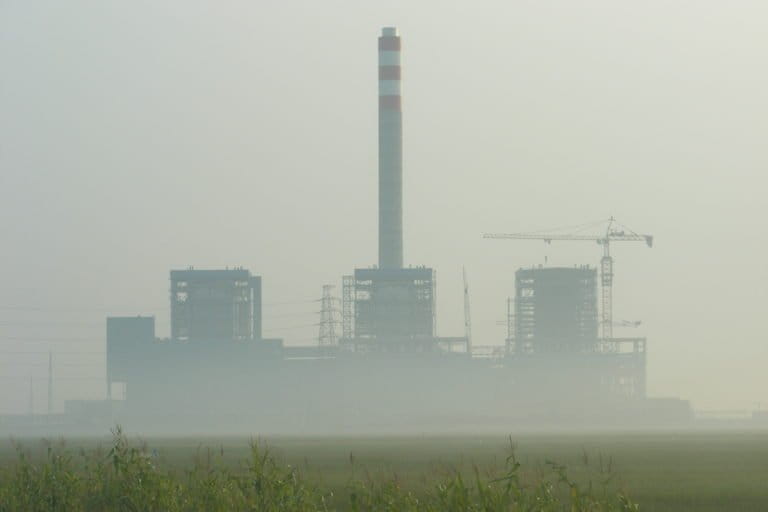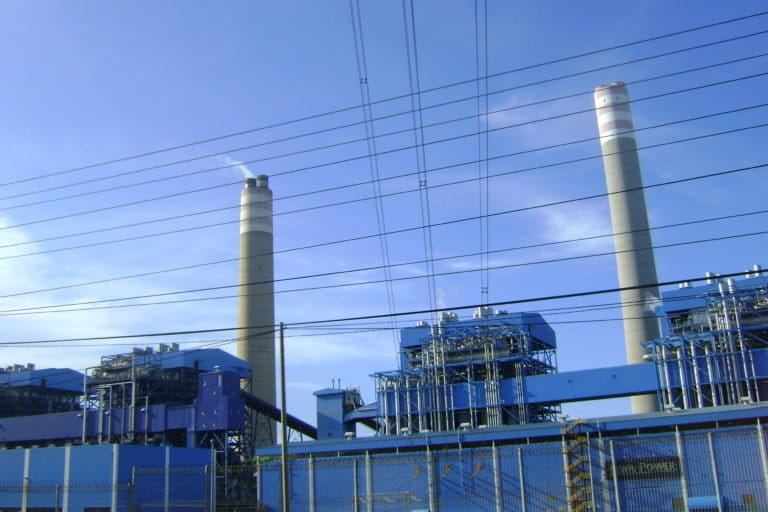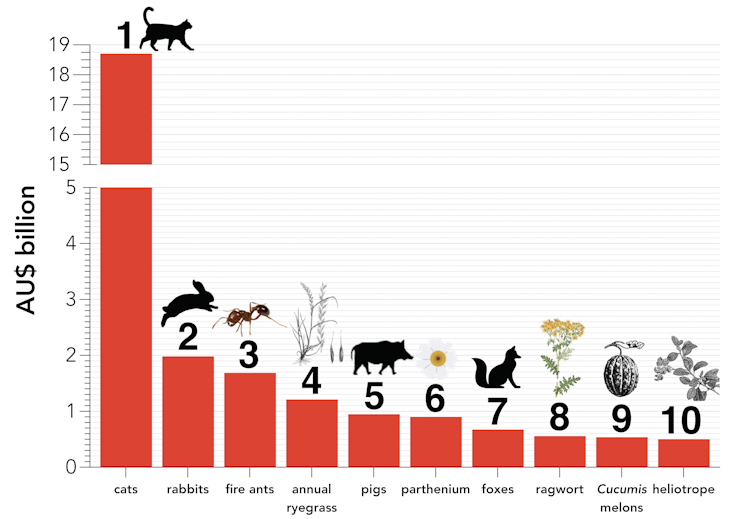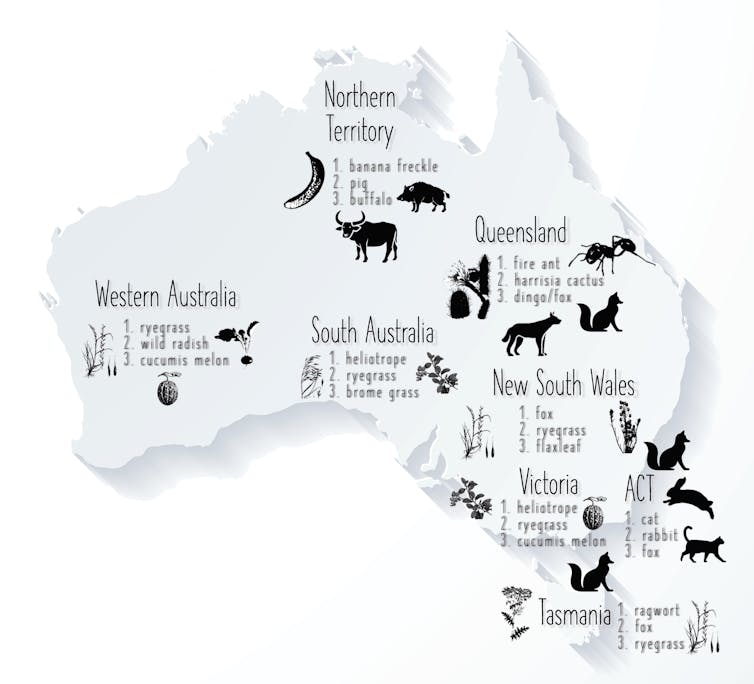All Global Research articles can be read in 51 languages by activating the “Translate Website” drop down menu on the top banner of our home page (Desktop version).
Visit and follow us on Instagram at @crg_globalresearch.
***
Abstract
This essay provides insights into the circumstances and potential societal impact of more than 10 million evacuees who fled Japan’s firebombed cities during World War II. Informed by interviews conducted by the United States Strategic Bombing Survey with Japanese citizens immediately after surrender, this analysis establishes a new vantage point from which to understand the complex social circumstances of Japan in the final months of the war.
Introduction1
Between February 1944 and August 1945 more than ten million Japanese citizens, one-seventh of the total population of Japan’s home islands, evacuated from the country’s cities. The population in rural Japan as a result rose from 42 million to 52.5 million in that timeframe.2 Tokyo alone declined from 6.8 million to 2.8 million. Such a large-scale exodus across the country affected all levels of Japanese society.3 Primarily via an analysis of the testimonies of civilian evacuees from Japanese cities firebombed in the final months of the war, this article suggests that this wide-scale disruption of the urban population merits greater attention than it has received.4

USSBS interview with Japanese citizen.
United States Strategic Bombing Survey Morale Division,
National Archives at College Park, Maryland, Microfilm Locator M1655, Roll 138.
In the fall of 1945, the United States Strategic Bombing Survey (USSBS) surveyed several thousand evacuees in 57 cities. The first-hand accounts of evacuees detail the complicated reality of the wartime civilian experience, one shaped by ever-changing civil defense policies, air raids and their aftermath, and government efforts to shape refugees’ perceptions of the war through its policies and propaganda. The accounts reveal that a range of concerns permeated their lives during the war: anxieties over the impact of air raids; the logistics of evacuating; negative social situations in the rural areas to which they evacuated; and a lack of food, shelter, clothing, and medical supplies.5
Examined collectively, the accounts and other related sources also suggest that wartime evacuees became a source of potential societal unrest. The Morale Division of the USSBS described Japanese wartime evacuees in this way: “not only was their own morale affected by their experiences, but they also carried with them the germs of ‘dangerous thoughts’ with which to infect their hosts.”6
As evidenced by the postwar USSBS interviews, most evacuation in Japan occurred “outside the state’s disaster planning.”7 While it is possible to detail some commonalities among many evacuees, reasons for leaving, experiences, and interpretations of events by the evacuees varied wildly. In spite of this, the incredible degree of government incompetence in dealing with evacuees is a testament to the increasingly desperate state of Japanese society in the final stages of war.
Citizens, for example, were told to flee for their lives and then penalized for evacuating. They were forced from their homes in order to create firebreaks in anticipation of air raids, yet given nowhere to which to evacuate. They were lauded by the media for their patriotism and then berated by their hosts in the rural villages for being traitors. These contradictions led many evacuees to give voice to experiences – which the government sought to dismiss as rumors – that directly contradicted the official narrative on their situation.
Within this context, it is no surprise that many citizens came to their own conclusions about the actual state of the war and that evacuees turned into a potential force for unrest throughout the country—functioning, in the very least, as alternatives to Japan’s state-controlled news outlets. As one 17-year-old aviator from Yokosuka put it immediately after the war, “The radios and newspapers never reported [anything] accurately. They said [damage] was [‘minor’] when it was considerable. I knew this because I heard so much from people who knew—from evacuees.”8
It wasn’t until September 1943 that the government first acknowledged urban evacuation as a possible course of action. That December the Japanese Cabinet enacted its “Outline for Carrying out Urban Evacuation” (toshi sokai jisshi yōkō), which encouraged the evacuation of all people nonessential to industrial work.9 Suggestive of the significance of this policy reversal of course was the fact that these laws clashed with wartime regulations that “gave the state powerful legal weapons against those residents who fled their neighborhoods without permission,” including “up to one year in prison with heavy labor or a maximum fine of 1,000 yen.”10
The campaign of “de-housing” or “structure evacuation” (tatemono sokai), in which homes were destroyed en masse to create firebreaks in major cities, began in January 1944 and likewise reveals a lack of effective implementation of civil defense policies. Citizens who lived in houses near public transit lines and areas in which firebreaks were planned often had no more than a week to vacate their properties. As a result of this rashly implemented policy, around 614,000 houses (one-fifth of all housing destroyed over the course of the war) were demolished, forcefully evacuating more than 3.5 million people, many of whom were not provided alternative accommodations.11
This defensive measure destroyed not just houses but the morale of many Japanese citizens. One evacuee, for example, in a letter to the editor of the Asahi Shimbun in the wake of Japan’s surrender, remembered that all the structures, including her own, had been destroyed to create firebreaks for 200 meters surrounding the Prime Minister’s residence. “We were suddenly told,” she recalled, “that a week later our house would be demolished by the military…. I was caring for a three-and-a-half-year-old child and a fourteen-month-old infant while my husband was away.” A series of tragic mishaps followed, and she lost all of her belongings as well as her home. She concluded: “Ordinary people were defeated by those on our own side rather than by the enemy. In order to protect the prime minister’s residence, we were dispersed without any recourse.”12
A teacher who evacuated from Tokyo to Shiga Prefecture received “no help whatsoever” from the government in moving and became “totally sick of war” after having his family forcefully separated by de-housing. And a worker at a war plant who also evacuated to Shiga prefecture said of his own de-housing experience: “I was very much against evacuating, but what could I do against an order?”13 The campaign of “de-housing” added to evacuees’ growing doubts about the government’s ability to manage the home front.
Prior to the large scale firebombing beginning in March 1945, government strategy for dealing with air raids involved four categories: “factory dispersal, creating firebreaks [de-housing], strengthening air defense activities in the neighborhoods, and evacuating as many people as possible to the countryside.”14 Evacuation measures tended to be encouraged rather than compulsory. This changed following the loss of the Mariana Islands, when in June 1944 the government published its “Outline for Encouraging the Evacuation of Schoolchildren,” the only compulsory evacuation measure enacted in the entire war.15
By March 1945, 446,200 urban schoolchildren (first through sixth grade) were evacuated with their classmates and teachers to the countryside. Another 800,000 were sent to live with relatives. One village in Nagano prefecture, for example, had a prewar population of 6,500. It was pushed to its limits when it received over 4,300 schoolchildren from various wards in Tokyo, and the memoirs of evacuated schoolchildren sent to Nagano reveal the large number of evacuating students, the lack of food and supplies, and resourcefulness demanded of the evacuees.16 In the countryside evacuees not only encountered, but seemingly compounded, the widespread material shortages affecting most of Japan in 1945.17 Some rural districts, already lacking sufficient housing, food, and the manpower necessary to accommodate their suddenly expanding populations, found a convenient scapegoat in the untimely arrival of evacuating citizens.
Daily life was heavily regimented for the schoolchildren in a fashion reminiscent of strict military training. Children woke at 5:30 A.M. and had their day strictly controlled until 8:00 P.M., with the largest segments of the day devoted to agricultural or “training work.”18
The written experiences of these evacuated schoolchildren emphasized homesickness, bullying, tensions between evacuee children and their hosts, agricultural work, and hunger above all else.19 One child remembered: “All we thought about was eating; all we talked about was what we ate in the past.”20 These harsh conditions often led to dark circumstances, including instances of sexual assault and attempted suicide. And near the end of the war, teachers, directed by the state, had children rehearse mass suicide in the event of an Allied invasion.21
The Evacuee as Agent of Social Unrest
In the last year of the war, while the government strongly encouraged evacuation of the general public engaged in nonessential activities, it provided little financial assistance. One housewife who fled to Fukuoka prefecture noted:
I footed all the expenses myself. I had heard that the government would give us a subsidy, but it was so uncertain as to when we would receive it, and since we couldn’t wait, I took care of everything myself. I spent more than 2000 yen in evacuation expenses. We could not wait for ordinary means, so I paid everything according to black market prices. Finally, six months later, I received 200 yen from the government.”22
Another, a bank clerk from Kobe, received compensation for her travel but, like most evacuees, received no help upon arriving in the countryside.
“The government paid our train fare and took care of our baggage. They made no arrangement for our living here.”23

Tokyo station immediately after the war.
United States Strategic Bombing Survey Morale Division,
National Archives at College Park, Maryland, Microfilm Locator M1655, Roll 138.
While some evacuation did occur prior to the Great Tokyo Air Raid of March 9-10, 1945—including the mandatory evacuation of elementary school children—the first major firebombing of Japan’s capital both increased the impetus to evacuate for the general populace and highlighted the disarray of official civil defense measures. As one official at the Police Affairs Bureau of the Home Ministry reflected, after the March 9-10 air raid on Tokyo “the government came to the conclusion—and it was the natural conclusion reached by the people too—that all raid preparations were hopeless and it was best to avoid injury and death by fleeing.”24 Immediately after the first major firebombing of Tokyo, an emergency cabinet meeting concluded with the bleak official pronouncement that “every city must manage for itself.”25
Official policy regarding evacuation from cities remained haphazard. Poet and novelist Itō Sei wrote in his diary in May 1945 that: “Until a few days ago I nearly decided to evacuate…then, in yesterday’s radio broadcast there was [another] revision to evacuation guidelines. It said we were no longer permitted to evacuate.”26 In a postwar letter to the editor of the Asahi Shimbun, one evacuated woman remembered that she “devotedly believed in the country and the news” until her husband was sent away after the March 9-10 air raid on Tokyo destroyed his company’s building. That same evening, she was notified that her house was to be immediately demolished. The next morning a tank came and pulled down her house. “Day by day the destruction of war grew worse,” she wrote. “There’s nothing as miserable as the cruelty of war. It robbed me of my husband. It robbed me of my home. In a single moment I lost what little happiness I had left.”27
In the absence of an effective or cohesive government approach to fire defense, the Japanese government transferred the burden of civil defense to ward authorities, who then handed off those responsibilities to neighborhood associations and local groups.28 These local authorities—contradicting limited government measures to encourage evacuation—often discouraged evacuation as unpatriotic late into 1945 when air raids had greatly intensified.29 Even as the state began to reverse course and encourage evacuation in the wake of the March 9-10 firebombing of Tokyo, some local associations maintained intense pressure on their citizens—especially those who attempted to flee.
The denial of food rations to evacuees was one of the most effective measures the neighborhood associations employed. In response to leaflets rained down from B-29s announcing an imminent attack on the city of Aomori, residents fled en masse, only to be coerced into returning by neighborhood associations refusing to grant them food rations until they did. (After most returned, Aomori was heavily bombed.)30
One evacuee—a baker who fled early in January 1944—remembered being treated like a deserter by the police in the countryside, who said to him “Are you Japanese or not?” Evacuees were jeered by locals as “traitors” and “hangers-on” for even the slightest of offenses.31 One spoke about the tenuous connection with rural hosts:
Relations between the evacuees and the natives of the area to which they evacuated are not too good. Among the evacuees and sufferers from damage and the people who have not suffered… there is great discrimination.”32
Ignoring increasing friction between evacuees and rural citizens in the countryside, the Japanese government issued propaganda claiming that mass evacuation was part of its plans. A March 1945 article in the Nippon Times, for instance, discussed government mobilization of evacuees to the countryside for the purpose of “convert[ing] the entire nation into a veritable fortress against which the invader will be smashed to his own destruction.” Yet the reality—with the exception of a few government measures beginning in mid-1945 such as specialized trains for evacuees, inconsistent federal assistance with relocation costs, and, above all, mandatory student relocation (gakudō sokai)—was that most wartime evacuation took place spontaneously and independent of the government.33 That is not to say that the state had not been attempting to integrate evacuation into official narratives since earlier in the war. In December 1943, for example, the Cabinet Board of Information officially defined evacuation as follows:
Urban evacuation does not mean only fleeing and dispersion from the city, but rather that every citizen must take an active part in the war effort and that the evacuation must be made an element which strengthens our fighting power. Evacuation is not just a flight from the cities but is a positive contribution toward strengthening our fighting power.”34
Newspapers portrayed evacuees as fleeing not of their own accord (and certainly not because Japan was losing the war), but in accord with government directives to aid wartime production. Even after the March 9-10 air raid in Tokyo as air raid destruction became glaringly irreconcilable with state narratives, newspaper articles detailed elaborate, government initiatives to put evacuees to work producing food in the countryside.35 Others offered the evacuees as examplars of the Yamato Spirit:
The victims of the raids who have lost their homes and material belongings, instead of bemoaning their losses, invariably feel the stronger and freer to devote their services to the nation for having been relieved of the encumbrances and responsibilities engendered by material possessions. …. They discover an extraordinary elation in being able now to dedicate themselves wholeheartedly to the exclusive service of the State.36
References to well-known people peppered such propaganda to lend it credibility. A June 1945 article titled “Well-Known Figures to Take up Rural Duties: Evacuees from Metropolis Shoulder the Hoe, Turn Efforts Towards Self Sufficiency” consisted simply of a long list of notable politicians and businessmen who had evacuated.37 Often such lists were accompanied by testimonies from readily recognized figures. Former ambassador to the United States, Admiral Nomura Kichisaburo, for example, whose house was destroyed by incendiaries, commented:
The greatest lesson I have learned here is the sincere spirit of work—a spirit that can be fostered only by living in the country in close contact with Mother Nature. The true strength of Japan lies in that spirit, the spirit that will prevail in the end and assure final victory.”38
Cracks, however, appeared in the government’s propaganda campaign of appropriating evacuees into its narrative of certain victory.39
As city after city burned, discussion of evacuees became accusatory. One article bemoaned a “dark side” of the situation by describing the burden placed by evacuees on rural communities known for their “simplicity and sincerity.”40
The challenge of newcomers was compounded by nation-wide shortages of food and commodities. One rikshaw driver in Akita city remembered immediately after the war, for example, that “when the evacuees came, the food problems worsened. Before the evacuees came, Akita was already short of commodities, so…they made the situation worse.”41 Even the Vice-Chief of the Cabinet Information Bureau in Tokyo reported in October of 1945 that “farm produce prices soared due to the high prices paid by evacuees.”42
Unsurprisingly, evacuees found life in the countryside extremely difficult. Some evacuated families were forced to return to their ruined cities after abortive attempts to join distant relatives or find a place in the countryside. To others it increasingly appeared that they were not welcome anywhere.
The evacuees’ presence, in fact directly contradicted the government’s propaganda: The abandoning of the cities heralded Japan’s imminent defeat. One mechanic from a rural village summarized the view of many: “Before the evacuees came, I thought Japan was still holding out and had a chance of winning [the war], but when the evacuees came I realized that we were losing the war.”43 Others, such as a 34-year-old school teacher in Wakayama, saw a direct correlation between the arrival of evacuees and their fear of air raids: “Before the evacuees came I didn’t think about the war so much, but after they came…I became afraid of the air raids.”44 A 56-year-old farmer in Akita prefecture explained the transformation simply: “I didn’t worry about the war at all before the evacuees came.”45 Imminent defeat was perhaps more obvious to the evacuees than to the rest of the population.
Spreading Rumors
By the spring of 1945 most able-bodied men were deployed overseas; the Japanese home front was overwhelmed by American airpower; and its vital imports severely curtailed by both aerial mining operations and naval blockades.46 Though the exact number of casualties remains difficult—if not impossible—to precisely calculate, the air raids on over 60 Japanese cities, combined with the atomic bombings of Hiroshima and Nagasaki, killed hundreds of thousands of Japanese citizens and rendered over a million homeless.47
Central to the government’s response was its attempt to mobilize and control Japan’s remaining manpower—primarily women, the elderly, and children.48 In the face of emphasis on control, as shown by Special Higher Police documents, reports of “anti-war” gossip and rumor-mongering increased dramatically near the end of the war, causing the Home Ministry to condemn the “hateful, unpatriotic act” of disseminating rumors as antithetical to victory.49
Simultaneously, air raid defense measures such as curfews, blackouts, propaganda posters, air raid drills, and even “air defense” songs and board games attempted to normalize civil defense in the lives of civilians as the war situation deteriorated.50 In mid-1945 the cabinet—facing the prospect of an impending Allied invasion—even organized and trained women and children to fight off invaders with bamboo spears as “home-front equivalents to the Kamikaze pilots.”51
Consequently, the futility of air raid defense and preparations became increasingly obvious to many. As one 25-year-old evacuee from Sendai recalled immediately after the war, “although they dug air raid shelters, set up cisterns of water, built fire breaks, and had air raid drills…I thought it was only a matter of [maintaining] outward appearance.”52 The idea of fighting off an Allied invasion with nothing but bamboo spears, in the face of incredible destruction was met with derision. One 64-year-old farmer from Shimonoseki, for example, recalled receiving “a command to drill with bamboo spears” in April of 1945 and although “everybody began to participate in the drills, I considered it a ridiculous exercise, useless in actual warfare.”53 An evacuee in Kure called the whole exercise “useless,” and a 29-year-old clerk in the Finance Ministry—who recalled hearing rumors directly from evacuees—recalled:
As the war progressed, even some soldiers were unable to get their guns and other war equipment. We, too, drilled for the approaching battle for the homeland with bamboo spears. . .How can a man fight a mechanized army with bamboo spears? We were deceived by the army leaders who constantly told the people that Japan will emerge victorious in the end.”54
With their firsthand experiences, the main culprits for the increased spreading of rumors, according to wartime reports by the Domei News Agency, were the evacuees themselves.55 The agency categorized rumors spread by evacuees into several categories, such as “scope of damage,” “neighborhood associations,” “espionage activities,” “economic conspiracies,” and “disposal of the dead” (among others). For example:
- “When the alert sounds…most people flee to the mountains instead of taking refuge in their own undependable private shelters.”
- “Many student workers in Nagoya are dead. Although they attempted to seek cover, they were ordered to stay at their posts to guard the factory. Because of that they died.”
- “The enemy bombings are accurate. Might there not be some spies among the Japanese?”
- “Since Osaka is the black-market center, the enemy is attempting to foster it in order to undermine economic life. Consequently, the enemy employs discretion in his bombings against the city.”56
The content of such rumors could be considered immaterial, however, when compared to the fact that evacuees were evidently vehicles for communication, information (accurate or not), and wartime anxiety for home front citizens. This uncontrolled spread of information heightened government concerns about evacuees.

Citizens living in tin huts in a bombed-out area.
United States Strategic Bombing Survey Morale Division,
National Archives at College Park, Maryland, Microfilm Locator M1655, Roll 138.
While the range and variety of rumors was extensive, a prevalent theme involved criticizing the Japanese ruling class, which seemed to have no trouble “enjoying all the luxuries of living” while “hardships increased” for people like them.57 The government’s drives to track and curtail so-called subversive behavior reveal a legitimate fear of societal unrest emerging from the millions of evacuees across the country.58
This demarcates a pivotal moment in which the state’s view of evacuees – and that of elite circles – shifted. Kido Kōichi, one of the closest advisors to emperor Hirohito, noted that “conditions inside the country were indeed ‘quite grievous.’ … [T]here were even signs of anti-militar[y] sentiment.”59 In one of the most powerful statements acknowledging the significance of social unrest among the people, former Prime Minister Yonai Mitsumasa noted:
I think the term is perhaps inappropriate, but the atomic bombs and the Soviet entry into the war are, in a sense, gifts from the gods [tenyu ‘heaven sent blessings’]. This way we don’t have to say that we surrendered because of domestic circumstances. I long held that the national crisis was neither fear of enemy attack nor because of the atomic bombs and the Soviet entry into the war. My main anxiety is over the domestic situation.60
While a number of factors led to Japan’s decision to surrender, it is clear that fear of internal social upheaval was a considerable concern for officials. Millions of evacuees constituted a central aspect of such unrest. The evacuees—as a community—present an important picture of the devastating impact of the war, the challenges to the cohesiveness of the Japanese social order, the societal challenges faced by the Japanese government, and the shifting of public opinion as the war progressed. As such, greater attention to their experiences and voices might help to expand understanding of Japan’s rapidly changing domestic situation in the final months of World War II.
*
Note to readers: Please click the share buttons above or below. Follow us on Instagram, @crg_globalresearch. Forward this article to your email lists. Crosspost on your blog site, internet forums. etc.
Dylan J. Plung works at the National Bureau of Asian Research in Seattle, WA. He holds an MAIS from the Japan Studies Program at the University of Washington’s Henry M. Jackson School of International Studies.
Asahi Shinbunsha. Senjō taiken ‘koe’ ga kataritsugu rekishi. Tokyo: Asahi Shinbunsha, 2003.
Atomic Heritage Foundation. “Warning Leaflets.”
Bix, Herbert. “Japan’s Delayed Surrender: A Reinterpretation,” in Diplomatic History, Vol. 19 (April 1, 1995).
Bix, Herbert. Hirohito and the Making of Modern Japan. New York: Harper Perennial, 2016.
Blatt, Marilyn, and Toshiyuki, Tanaka, eds. Bombing Civilians: A Twentieth-Century History. New York: New Press, 2009.
Civilian Defense Division, United States Strategic Bombing Survey. Final Report Covering Air-Raid Protection and Allied Subjects in Japan. Washington, D.C.: U.S. Government Printing Office, 1947.
Cook, Theodore F. and Cook, Haruo Taya. Japan at War: An Oral History. New York: New Press, 1992.
Craven, Wesley Frank, and Cate, James Lea. The Army Air Forces in World War II. Volume V, The Pacific: Matterhorn to Nagasaki, June 1944 to August 1945. Chicago: University of Chicago Press, 1948-1958.
Dower, John W. Cultures of War: Pearl Harbor, Hiroshima, 9-11, Iraq. New York: W.W. Norton, 2011.
Embracing Defeat: Japan in the Wake of World War II. New York: W.W. Norton, 1999.
Empire and Aftermath: Yoshida Shigeru and the Japanese Experience, 1878-1954. Cambridge, Mass.: Harvard University Press, 1988.
Japan in War and Peace: Selected Essays. New York: New Press, 1993.
Edoin, Hoito. The Night Tokyo Burned. New York: St. Martin’s Press, 1987.
Fedman, David, and Karacas, Cary. “A Cartographic Fade to Black: Mapping the Destruction of Urban Japan During World War II.” Journal of Historical Geography, Vol. 38 (2012).
Frank, Richard B. Downfall: The End of the Imperial Japanese Empire. New York: Random House, 1999.
Garon, Sheldon. “Defending Civilians against Aerial Bombardment: A Comparative/Transnational History of Japanese, German, and British Home Fronts, 1918-1945.” Asia-Pacific Journal: Japan Focus vol. 4, issue 23, no. 2 (2016).
—— “The Home Front and Food Insecurity in Wartime Japan: A Transnational Perspective” in Hartman Berghoff, Jan Logemann, and Felix Romer, eds., The Consumer on the Home Front: Second World War Civilian Consumption in Comparative Perspective. New York: Oxford University Press, 2017.
Gibney, Frank and Cary, Beth. Senso: The Japanese Remember the Pacific War: Letters to the Editor of the ‘Asahi Shimbun.’ New York: Routledge, 2015.
Haley, John Owen. The Spirit of Japanese Law. Athens, GA: University of Georgia Press, 1998.
Hasegawa, Tsuyoshi. The End of the Pacific War: Reappraisals. Stanford: Stanford University Press, 2007.
Havens, Thomas. Fire Across the Sea: The Vietnam War and Japan, 1965-1975. Princeton: Princeton University Press, 1987.
—— Valley of Darkness. Maryland: University Press of America, 1986.
Ienaga, Saburō. The Pacific War, 1931-1945: A Critical Perspective on Japan’s Role in World War II. New York: Pantheon Books, 1978.
Ikle, Fred Charles. The Social Impact of Bomb Destruction. Norman: University of Oklahoma Press, 1958.
Iriye, Akira. Power and Culture: The Japanese-American War, 1941-1945. Cambridge, MA: Harvard University Press, 1981.
Itō, Sei. Taiheiyō sensō nikki. Tokyo: Shinchōsha, 1983.
Johnson, Gregory Scott. “Mobilizing the Junior Nation: The Mass Evacuation of School Children in Wartime Japan.” PhD diss., Department of East Asian Languages and Cultures, Indiana University, 2011, UMI 3380088.
Karacas, Cary. “Tokyo From the Fire: War, Occupation, and the Remaking of a Metropolis,” PhD diss., University of California, Berkeley, 2006.
Keene, Donald. So Lovely a Country Will Never Perish: Wartime Diaries of Japanese Writers. New York: Columbia University Press, 2010.
Kerr, E. Bartlett. Flames Over Tokyo. New York: D.I. Fine, 1991.
Kiyoshi, Kiyosawa. A Diary of Darkness: The Wartime Diary of Kiyosawa Kiyoshi. Princeton: Princeton University Press, 1999.
MacIsaac, David. Strategic Bombing in World War Two: The Story of the United States Strategic Bombing Survey. New York: Garland Publishing, Inc., 1976.
Mizushima, Asaho and Omae Osamu. Kenshō bōkūhō: kūshū-ka de kinjirareta hinan. Kyoto: Hōritsu Bunkasha, 2014.
Moore, Aaron William. Bombing the City: Civilian Accounts of the Air War in Britain and Japan, 1939-1945. New York: Cambridge University Press, 2018.
Morale Division, The United States Strategic Bombing Survey. The Effects of Strategic Bombing on Japanese Morale. Washington, D.C.: U.S. Government Printing Office, 1947.
Morale Division, United States Strategic Bombing Survey. National Archives at College Park. Microfilm Locator M1655.
——Roll 77.
——Roll 97.
——Roll 98.
——Roll 105.
——Roll 106.
——Roll 107.
——Roll 108.
——Roll 109.
——Roll 115.
——Roll 121.
——Roll 122A.
——Roll 123.
——Roll 128.
——Roll 137.
——Roll 138.
——Roll 142.
Nippon Times.
—— “The Supreme Effort for Defense” (March 24, 1945).
—— “To Up Foodstuff Output” (March 31, 1945).
—— “Farmers Now Prepared to Begin Spring Sowing” (April 23, 1945).
—— “Results of the Enemy Raids” (April 28, 1945).
—— “U.S. Seen Eager to Break Japan’s Fighting Power” (August 10, 1945).
—— “Hokkaido Project Body Formally Inaugurated” (June 15, 1945).
—— “Well-Known Figures to Take up Rural Duties: Evacuees from Metropolis Shoulder the Hoe, Turn Efforts Towards Self Sufficiency” (June 29, 1945).
—— “Japan’s Real Strength Lies in Rural Workers” (August 9, 1945).
Omae, Osamu, ‘Nigeru na, hi wo kese!’ Senjika tondemo ‘bōkūhō.’ Tokyo: Gōdō Shuppan, 2016.
Plung, Dylan. “The Japanese Village at Dugway Proving Ground: An Unexamined Context to the Firebombing of Japan.” Asia-Pacific Journal: Japan Focus, vol. 16, issue 8, no. 3 (April 15, 2018).
Pyle, Kenneth B. The Making of Modern Japan, 3rd ed. Acton, MA: XanEdu, 2017.
—— Japan in the American Century. Cambridge, Mass.: Harvard University Press, 2018.
Ralph, William W. “Improvised Destruction: Arnold, LeMay, and the Firebombing of Japan.” War in History, Vol. 13, No. 4 (October 2006).
Sasaki-Uemura, Wesley Makoto. Organizing the Spontaneous: Citizen Protest in Postwar Japan. Honolulu: University of Hawaii Press, 2001.
Schaffer, Ronald. Wings of Judgement: American Bombing in World War II. New York: Oxford University Press, 1985.
Selden, Kyoko, and Akira Iriye. “A Childhood Memoir of Wartime Japan.” Asia-Pacific Journal: Japan Focus, vol. 14, issue 15 (2016).
Sherry, Michael S. The Rise of American Air Power: The Creation of Armageddon. New Haven: Yale University Press, 1987.
Shillony, Ben-Ami, Politics and Culture in Wartime Japan. New York: Oxford University Press, 1981.
Takeyama, Michio. The Scars of War: Tokyo during World War II: Writings of Takeyama Michio, translated by Richard Minear. Lanham: Rowman & Littlefield, 2007.
Tamanoi, Mariko. Under the Shadow of Nationalism: Politics and Poetics of Rural Japanese Women. Honolulu: University of Hawaii Press, 1998.
United States Strategic Bombing Survey. Summary Report (Pacific War). Washington, D.C.: U.S. Government Printing Office, 1946.
Yamashita, Samuel Hideo. Daily Life in Wartime Japan, 1940-1945. Lawrence: University Press of Kansas, 2015.
—— Leaves from an Autumn of Emergencies: Selections from the Wartime Diaries of Ordinary Japanese. Honolulu: University of Hawaii Press, 2005.
Yellen, Jeremy A. “The Specter of Revolution: Reconsidering Japan’s Decision to Surrender.” The International History Review, Vol. 35, No. 1 (2012).
Yomiuri Shimbun. “Sokaisha ni senyō ressha: rōyō, tatemono sokai wa yūsen.” March 30, 1945.
Notes
1 Special thanks are due to the University of Washington Henry M. Jackson School of International Studies, Japan Studies Program for generously funding travel to the National Archives at College Park, Maryland to conduct this original research, as well as for funding travel expenses to present this research at Harvard University in early 2019. Additional major thanks are due to Professors Kenneth Pyle and Mark Metzler for their detailed guidance and support, as well as to Cary Karacas for his editorial assistance. Thanks are due to my father for being a constant source of inspiration and support, as well as to Victoria Rahbar for her initial feedback. Lastly, I wish to express my sincerest appreciation for Lillian and her constant patience, kindness, and partnership, without which none of this would have been possible.
2 Thomas Havens, Valley of Darkness (Maryland: University Press of America, 1986), 167, 170.
3 Gregory Scott Johnson, “Mobilizing the Junior Nation: The Mass Evacuation of School Children in Wartime Japan,” PhD diss., Department of East Asian Languages and Cultures, Indiana University, 2011, UMI 3380088, 213-214.
4 This research draws on a wide variety of materials such as diaries, newspapers, editorials, various materials confiscated from official Japanese sources, and interviews with Japanese citizens conducted by the Morale Division of the United States Strategic Bombing Survey (USSBS). The USSBS analyzed the overall impact of American strategic bombing in both the European and Pacific theaters. The Morale Division was a subset of this organization that concerned themselves with the evacuees.
5 Kerr, Flames Over Tokyo, 280-281.
6 United States Strategic Bombing Survey Morale Division, The Effects of Strategic Bombing on Japanese Morale, 73.
7 Havens, Valley of Darkness, 167.
8 United States Strategic Bombing Survey Morale Division, “Resident Interviews by City” (December 19, 1945), National Archives at College Park, Maryland, Microfilm Locator M1655, Rolls 122A-123.
9 Cary Karacas, “Tokyo From the Fire: War, Occupation, and the Remaking of a Metropolis,” PhD diss., University of California, Berkeley, 2006, 70.
10 Garon, “Defending Civilians,” 9.
11 Havens, Valley of Darkness, 158-159; United States Strategic Bombing Survey Civilian Defense Division, Final Report Covering Air-Raid Protection and Allied Subjects in Japan (Washington, D.C.: U.S. Government Printing Office, 1947), 172.
12 Frank Gibney and Beth Cary, Senso: The Japanese Remember the Pacific War: Letters to the Editor of the ‘Asahi Shimbun’ (New York: Routledge, 2015), 173-174.
13 United States Strategic Bombing Survey Morale Division, “Resident Interviews by City” (1945), National Archives at College Park, Microfilm Locator M1655, Roll 109.
14 Havens, Valley of Darkness, 158.
15 Ibid., 162.
16 Johnson, “Mobilizing the Junior Nation,” 2-3, 224, 261; Kyoko Selden and Akira Iriye, “A Childhood Memoir of Wartime Japan,” Asia-Pacific Journal: Japan Focus, vol. 14, issue 15 (2016), https://apjjf.org/2016/15/Selden-1.html.
17 For detailed analyses of Japan’s wartime food situation, see Bruce F. Johnston, Japanese Food Management in World War II (Stanford, CA: Stanford University Press, 1953) and Jerome B. Cohen, Japan’s Economy in War and Reconstruction (Minneapolis: University of Minnesota Press, 1949).
18 Ibid., 261-263, 267.
19 Havens, Valley of Darkness, 162-163; Cook and Cook, Japan at War, 233.
20 Samuel Hideo Yamashita, Daily Life in Wartime Japan, 1940-1945 (Lawrence: University Press of Kansas, 2015), 115-116.
21 Johnson, “Mobilizing the Junior Nation,” 254.
22 United States Strategic Bombing Survey Morale Division, “Resident Interviews by City” (December 5, 1945), National Archives at College Park, Microfilm Locator M1655, Roll 108.
23 United States Strategic Bombing Survey Morale Division, “Resident Interviews by City” (December 21, 1945), National Archives at College Park, Microfilm Locator M1655, Roll 107.
24 United States Strategic Bombing Survey Morale Division, The Effects of Strategic Bombing, 73.
25 Hoito Edoin, The Night Tokyo Burned (New York: St. Martin’s Press, 1987), 158.
26 Sei Itō, Taiheiyō sensō nikki (Tokyo: Shinchōsha, 1983), 305.
27 Asahi Shinbunsha, Senjō taiken ‘koe’ ga kataritsugu rekishi (Tokyo: Asahi Shinbunsha, 2003), 106-107.
28 Havens, Valley of Darkness, 158-159; Karacas, “Tokyo from the Fire,” 52.
29 Mizushima Asaho and Omae Osamu, Kenshō bōkūhō: kūshū-ka de kinjirareta hinan (Kyoto: Hōritsu Bunkasha, 2014), 12-15.
30 Mizushima and Omae, Kenshō bōkūhō, 12-15; Garon, “Defending Civilians,” 9.
31 United States Strategic Bombing Survey Morale Division, The Effects of Strategic Bombing on Japanese Morale, 81; Yamashita, Daily Life in Wartime Japan, 122; Gibney and Cary, Senso, 172, 203-204.
32 United States Strategic Bombing Survey Morale Division, “Resident Interviews by City” (December 14, 1945), National Archives at College Park, Microfilm Locator M1655, Roll 108.
33 “The Supreme Effort for Defense” (March 24, 1945), Nippon Times; “Sokaisha ni senyō ressha: rōyō, tatemono sokai wa yūsen” Yomiuri Shimbun (March 30, 1945); Havens, Valley of Darkness, 167.
34 United States Strategic Bombing Survey Morale Division, The Effects of Strategic Bombing on Japanese Morale, 73.
35 One article even went so far as to claim that the evacuees would be producing an unbelievable “2,750,000,000 kan of potatoes” (approximately 22 billion pounds). Many evacuees could barely sustain themselves. “To Up Foodstuff Output” (March 31, 1945), Nippon Times; “Farmers Now Prepared to Begin Spring Sowing” (April 23, 1945), Nippon Times; “Hokkaido Project Body Formally Inaugurated” (June 15, 1945), Nippon Times.
36 “Results of the Enemy Raids” (April 28, 1945), Nippon Times.
37 This list included a Chief of Military Affairs, barons, former Foreign Ministers, Commerce Ministers, Education Ministers, Ministers of Agriculture, members of the House of Peers, Cabinet Advisors, and prominent businessmen from Mitsui and Mitsubishi, among many others. “Well-Known Figures to Take up Rural Duties: Evacuees from Metropolis Shoulder the Hoe, Turn Efforts Towards Self Sufficiency” (June 29, 1945), Nippon Times.
38 “Japan’s Real Strength Lies in Rural Workers” (August 9, 1945), Nippon Times.
39 United States Strategic Bombing Survey Morale Division, The Effects of Strategic Bombing on Japanese Morale, 73.
40 “U.S. Seen Eager to Break Japan’s Fighting Power” (August 10, 1945), Nippon Times.
41 United States Strategic Bombing Survey Morale Division, “Resident Interviews by City” (November 14, 1945), National Archives at College Park, Maryland, Microfilm Locator M1655, Roll 98.
42 United States Strategic Bombing Survey Morale Division, “Special Interviews by Locality” (October 24, 1945), National Archives at College Park, Maryland, Microfilm Locator M1655, Roll 128.
43 United States Strategic Bombing Survey Morale Division, “Resident Interviews by City” (December 15, 1945), National Archives at College Park, Maryland, Microfilm Locator M1655, Roll 109.
44 United States Strategic Bombing Survey Morale Division, “Resident Interviews by City” (December 6, 1945), National Archives at College Park, Maryland, Microfilm Locator M1655, Roll 121.
45 United States Strategic Bombing Survey Morale Division, “Resident Interviews by City” (November 17, 1945), National Archives at College Park, Maryland, Microfilm Locator M1655, Roll 98.
46 Craven, Wesley Frank, and Cate, James Lea, The Army Air Forces in World War II. Volume V, The Pacific: Matterhorn to Nagasaki, June 1944 to August 1945 (Chicago: University of Chicago Press, 1948-1958), 666-670.
47 For a discussion of varying estimates, see Richard B. Frank, Downfall: The End of the Imperial Japanese Empire (New York, NY: Penguin Books, 2001), 331-348.
48 See Cohen, Japan’s Economy, 271-352.
49 Dower, Japan in War and Peace, 109-110, 129; Air Defense Bureau of the Home Ministry of Japan, Jikkyoku bōkū hikkei kaisetsu, compiled in the United States Strategic Bombing Survey (1943), National Archives at College Park, Maryland, Microfilm Locator M1655, Roll 77.
50 Omae, Osamu, ‘Nigeru na, hi wo kese!’ Senjika tondemo ‘bōkūhō’ (Tokyo: Gōdō Shuppan, 2016), 10-46.
51 Havens, Valley of Darkness, 188-191.
52 United States Strategic Bombing Survey Morale Division, “Resident Interviews by City” (December 3, 1945), National Archives at College Park, Maryland, Microfilm Locator M1655, Roll 115.
53 United States Strategic Bombing Survey Morale Division, “Resident Interviews by City” (December 14, 1945), National Archives at College Park, Maryland, Microfilm Locator M1655, Roll 115.
54 United States Strategic Bombing Survey Morale Division, “Resident Interviews by City” (December 1, 1945), National Archives at College Park, Maryland, Microfilm Locator M1655, Roll 105; United States Strategic Bombing Survey Morale Division, “Resident Interviews by City” (December 1, 1945), National Archives at College Park, Maryland, Microfilm Locator M1655, Roll 115.
55 United States Strategic Bombing Survey Morale Division, The Effects of Strategic Bombing on Japanese Morale, 86, 88; Domei News Agency, “Survey Data on Regional Conditions” translated by United States Strategic Bombing Survey Morale Division, National Archives at College Park, Maryland, Microfilm Locator M1655, Roll 137.
56 Domei News Agency, “Survey Data on Regional Conditions” in National Archives at College Park, Microfilm Locator M1655, Roll 137.
57 United States Strategic Bombing Survey Morale Division, “Resident Interviews by City” (December 15, 1945), National Archives at College Park, Maryland, Microfilm Locator M1655, Roll 109.
58 United States Strategic Bombing Survey Morale Division, The Effects of Strategic Bombing on Japanese Morale, 235-236.
59 Akira Iriye, Power and Culture: The Japanese-American War, 1941-1945 (Cambridge, Mass.: Harvard University Press, 1981), 239.
60 Bix, “Japan’s Delayed Surrender,” 217-218.
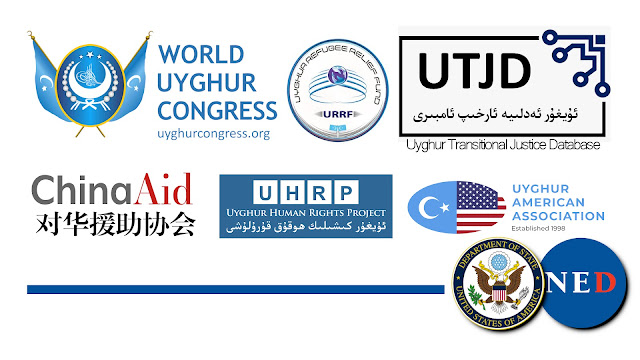







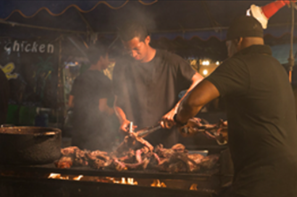


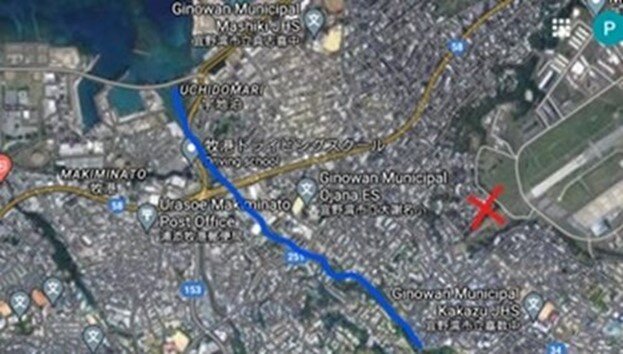









:no_upscale()/cdn.vox-cdn.com/uploads/chorus_asset/file/22735493/Screen_Shot_2021_07_23_at_10.07.47_AM.png)

